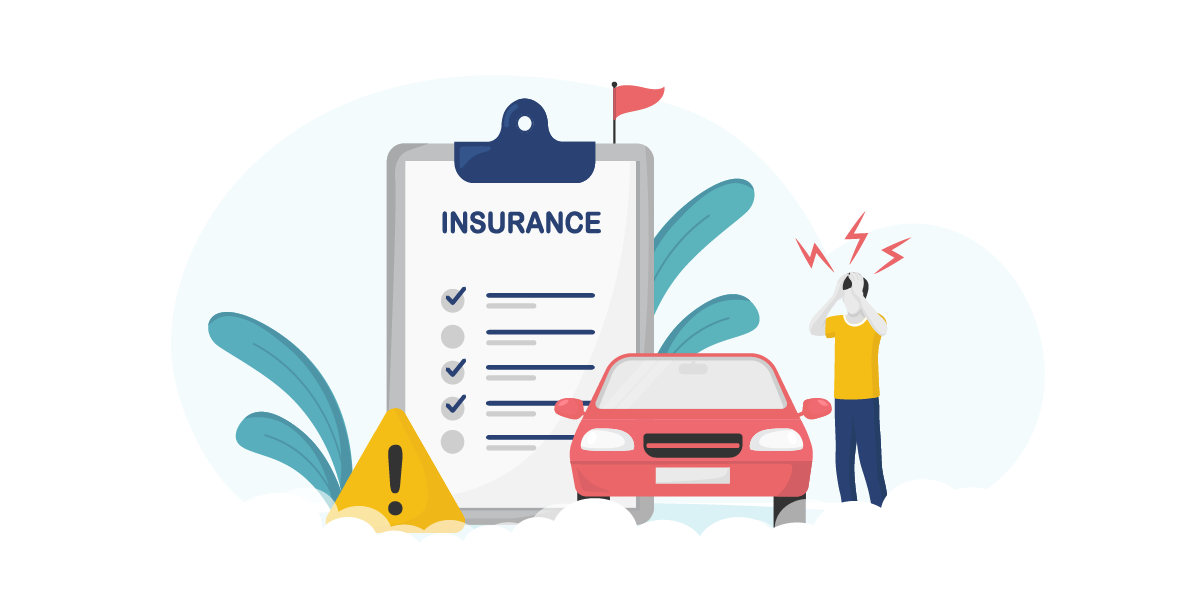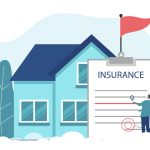9 Auto Insurance Red Flags You Can’t Afford to Ignore
June 1, 2025
Car insurance isn’t exactly a thrilling dinner table conversation. Most of us pick a policy, set up payments, and forget about it—until something goes wrong. But here’s the thing: Auto Insurance isn’t just a box to tick. It’s your financial safety net if you get into an accident, if your car is stolen, or if someone takes legal action against you. And like any safety net, it only works if it’s in good condition. Still, many drivers don’t realize they’re driving around with outdated details, overlooked options, or misunderstood coverage. Even small gaps in your policy can lead to denied claims or hefty out-of-pocket costs.


So if you haven’t looked at your Auto Insurance lately, now’s the time. These red flags aren’t just about what’s missing or buried in the fine print in your policy—they’re also signs that your habits or decisions could be putting your coverage at risk. Let’s break down what to watch for and how to get your Auto Insurance back on track before it costs you.
1. Your Policy Is Outdated
Life doesn’t stand still, but your policy might be stuck in the past. If you’ve moved, changed jobs or switched vehicles, your insurance needs have likely changed too.
Insurers calculate your premium based on the most current, accurate information, like where you live, how far you drive, and how your vehicle is used. If your address or driving habits are outdated, you could be paying too much, or worse, you might find out your coverage doesn’t apply when you need it.
A quick annual check-in with your broker or insurer can go a long way. It only takes a few minutes to update your details and make sure your protection actually reflects your life today.
RELATED: 9 Factors That Affect Your Auto Insurance Premiums
2. Your Vehicle Use is Listed Incorrectly
If your car is listed for “pleasure use” but you’re driving it to work every day, your policy might not hold up in a claim. Insurers calculate your premium based on how—and how often—you use your vehicle. If you’re in an accident during your daily commute, and your policy only covers occasional weekend drives, they could deny the claim due to misrepresentation.
It’s an even bigger deal if you’re using your car to make a bit of side income, like doing food deliveries or driving for Uber or Lyft. Standard Auto Insurance doesn’t usually cover this type of use. And without the proper endorsements or commercial coverage in place, you could be on the hook for any damages or liability.
Whether it’s commuting, gig work, or even just more frequent use than before, be upfront with your broker or insurer. Getting classified correctly ensures your coverage is valid—and that you’re not left paying out of pocket when it matters most.
RELATED: Rideshare Drivers: Are You Insured Enough?
3. The Drivers on Your Policy Don’t Match Reality
Maybe you listed someone else as the primary driver to save money. Or you’ve got a teenager or roommate who borrows your car but isn’t officially on the policy. Either way, you’re taking a big risk.
Insurers expect all licensed drivers in the household to be disclosed. If someone not listed gets into an accident, your claim could be denied. Likewise, listing a low-risk driver as primary when they’re not the one driving most often can be considered misrepresentation.
If someone drives your car regularly, make sure your policy says so.
RELATED: 6 Frequently Asked Questions About Secondary Driver Insurance
4. You’re Still Carrying the Minimum Liability Coverage
Basic coverage might meet legal requirements, but it likely won’t cover all the costs of a serious accident. If your liability limit is too low, anything beyond that could come out of your pocket. Let’s say you rear-end a luxury SUV, and the driver claims neck injuries and time off work. Between medical bills, legal fees, and lost income, you could be looking at hundreds of thousands in damages, far beyond what a basic policy will cover.
That’s why many experts recommend bumping your third-party liability coverage—the portion of your auto insurance that covers injury or damage you cause to others—to at least $1 million, though $2 million is increasingly common, especially if you drive frequently, commute in high-traffic areas, or own property and other assets you want to protect. The added protection often costs just a few extra dollars per month, but it can shield you from devastating out-of-pocket expenses in a worst-case scenario.
Not sure how much you need? A broker can walk you through different limit options based on your risk factors and help you find the right balance between affordability and protection.
5. You Don’t Have Accident Forgiveness
One accident can stay on your record for years, increasing your premium every time you renew. That’s why Accident Forgiveness Insurance can be such a smart add-on. It lets you maintain your current rate after your first at-fault accident.
Without it, a single mistake—like a fender bender in a parking lot—could lead to higher premiums for up to six years. Accident Forgiveness acts as a buffer, so one incident from years past doesn’t haunt your rates long after the damage is done.
Not all insurers offer it automatically, so it’s worth checking if it’s available with your current policy, or if you should be shopping around.
RELATED: Is Accident Forgiveness Insurance Worth It?
6. You Think “Full Coverage” Means Everything is Covered
“Full coverage” is one of the most misunderstood terms in car insurance. Many people assume it means they’re protected from anything that could happen. In reality, it typically just means your policy includes liability, collision, and comprehensive coverage, but even then, there are exclusions and limits you need to be aware of.
It doesn’t include things like rental reimbursement, roadside assistance, or enhanced medical benefits unless you’ve specifically added them. Know what’s included in your policy and what’s not, so you’re not caught off guard.
RELATED: Collision vs. Comprehensive Insurance: What’s the Difference?
7. Your Policy Doesn’t Reflect Any Vehicle Modifications
Take a quick scan of your auto policy—do you see any mention of custom upgrades? If not, and you’ve made changes like new rims, a modified exhaust, suspension tweaks, or even a fresh paint job, that’s a problem. Most insurers need to know about any aftermarket modifications in order to properly insure your vehicle.
If these changes aren’t listed, you run the risk of not being fully covered in the event of a claim. Your insurer might refuse to pay for repairs or replacements related to those upgrades, or worse, void the policy for non-disclosure.
To avoid surprises, make sure your policy is always up to date with the current condition of your vehicle.
RELATED: Here’s Why You Should Think Twice About Car Modifications
8. You Haven’t Looked at Your Accident Benefits—And You Should
Accident Benefits cover your recovery if you’re injured in a car accident. That includes medical treatment, rehab, income replacement, and attendant care. These benefits are automatically included in every Ontario Auto Insurance policy, but the standard limits might not go far enough.
This is especially true if you’re self-employed, earn a high income, or don’t have strong workplace benefits to fall back on. And while many people assume OHIP will step in, the reality is that OHIP doesn’t cover many accident-related expenses like private rehab or in-home care. Without enhanced benefits, you could be left paying out of pocket while you recover.
When reviewing your policy, look at the specific limits for medical, rehab, and income replacement benefits. Talk to your broker about whether those limits match your lifestyle, income, and support needs. Increasing them usually costs a small amount more, but the added protection can make all the difference if you’re seriously hurt.
RELATED: Understanding Accident Benefits
9. Your Premium Has Gone Up—But Nothing’s Changed
If your Auto Insurance premium keeps creeping up year after year, even though your driving habits, vehicle, or location haven’t changed, it could be a sign to take a closer look. While rising costs aren’t always a red flag—rate increases can happen for reasons beyond your control—they’re still a sign that you should review your coverage.
Many drivers accept their renewal quote without shopping around. But you could be overpaying for the same (or even reduced) coverage. Insurance pricing varies widely between providers. Some offer better rates for low-mileage drivers, while others reward long-time policyholders or clean driving records.
If you haven’t compared quotes in a few years, now’s a good time to do so. Shopping around helps you see what other insurers are offering and whether your current premium is still competitive. Even if nothing has changed on your end, your policy might not be keeping up. A regular review can help ensure you’re getting solid coverage at a fair price.
RELATED: Why You Should Still Shop Around for Home & Auto Insurance
The Bottom Line
Let’s be honest—insurance isn’t something most people enjoy managing. It’s complex, filled with fine print, and easy to overlook. Even if you do compare quotes, it can be hard to know if you’re actually making the right choice. That’s where a broker comes in.
A broker doesn’t just find you a policy. They take the time to understand your situation, identify risks, and explain your options clearly. They’ll help you avoid common mistakes, stay up to date as your life evolves, and ensure your coverage actually works when you need it most.
At PROLINK, we’ve been helping Canadians protect what matters most for over 40 years. With access to over 30 leading insurers and deep insight into today’s insurance landscape, we can match you with the right policy, from the right insurer, at the right price—so you can drive with peace of mind.
Ready to make sure your Auto Insurance is keeping up with your life? Let’s talk.
PROLINK’s blog posts are general in nature. They do not take into account your personal objectives or financial situation and are not a substitute for professional advice. The specific terms of your policy will always apply. We bear no responsibility for the accuracy, legality, or timeliness of any external content.




